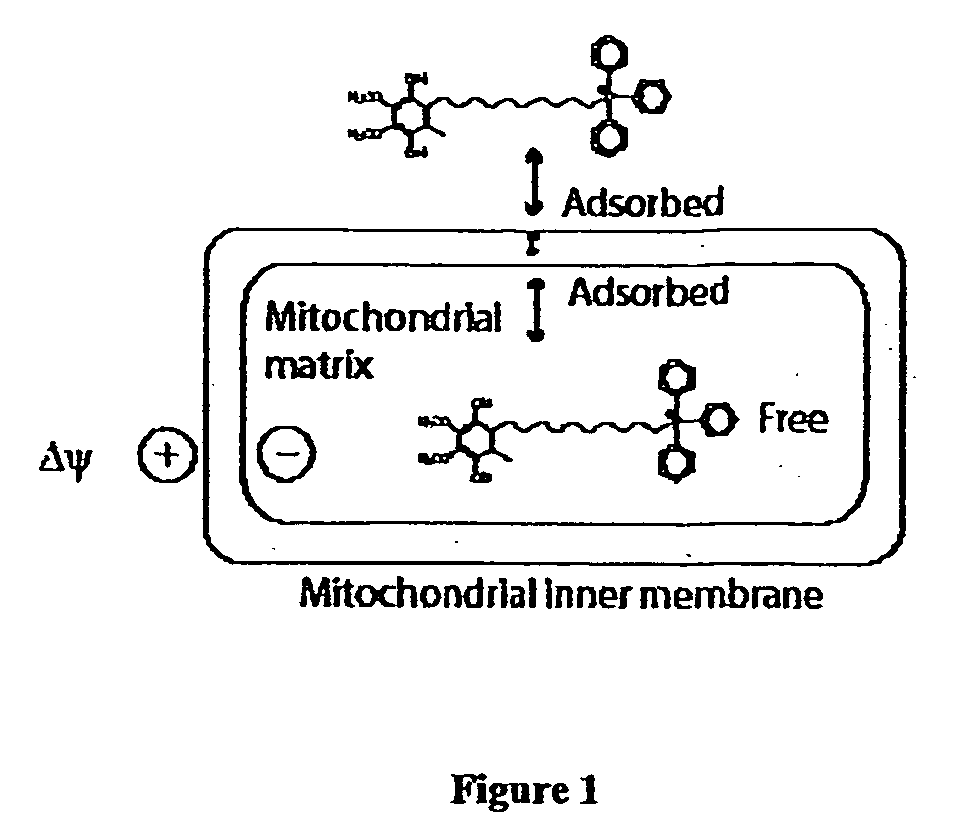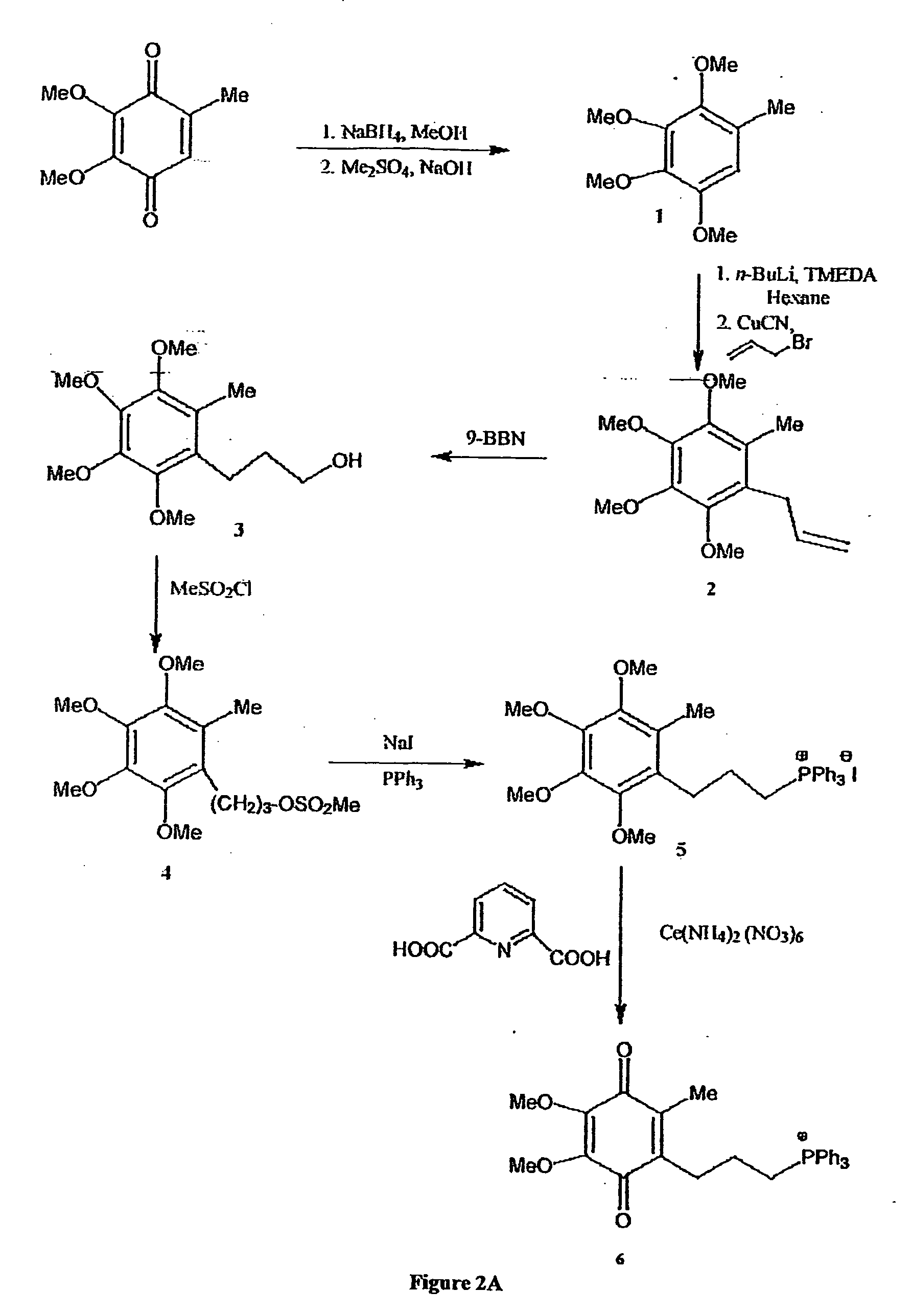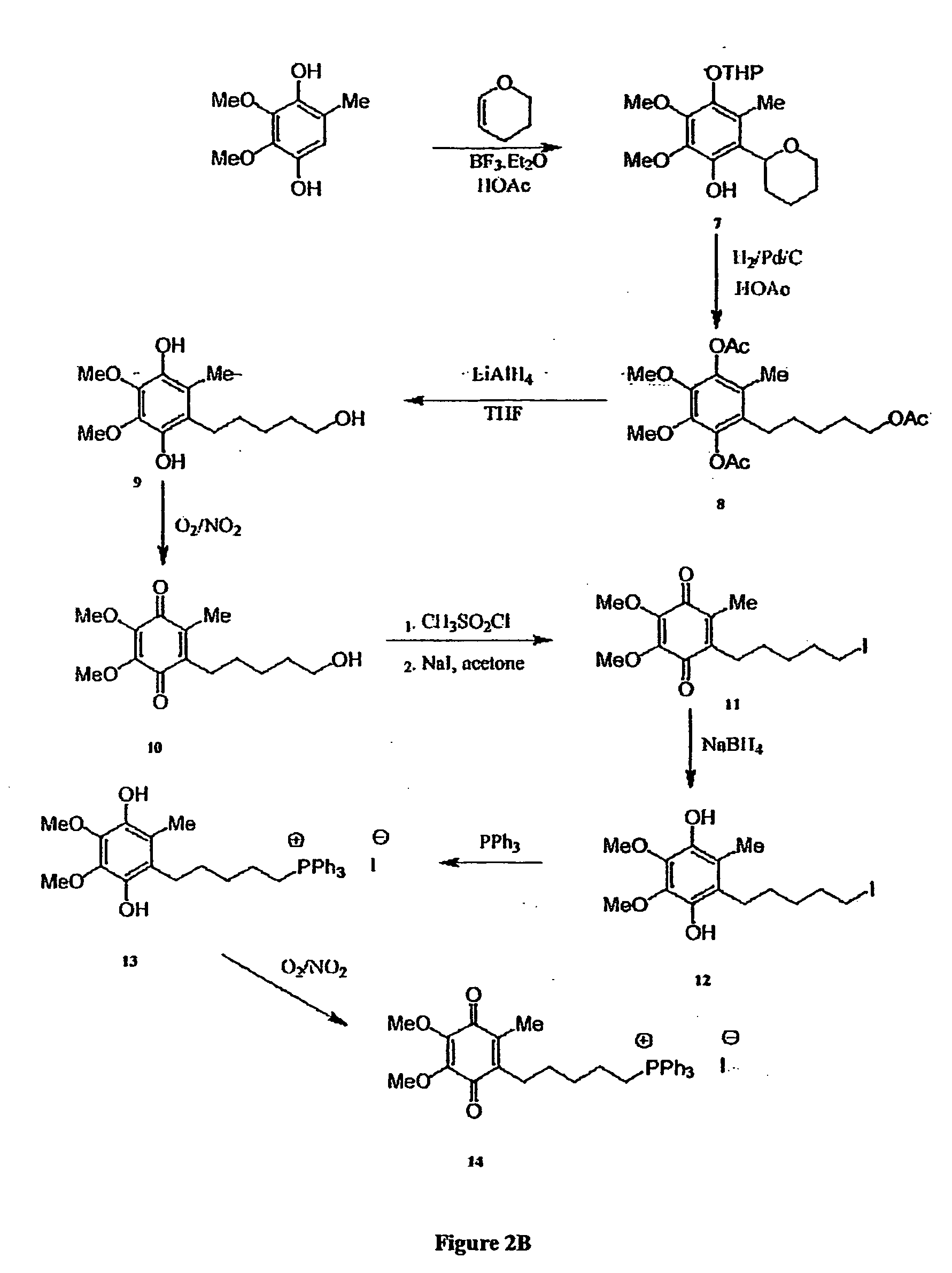Mitoquinone derivatives used as mitochondrially targeted antioxidants
- Summary
- Abstract
- Description
- Claims
- Application Information
AI Technical Summary
Benefits of technology
Problems solved by technology
Method used
Image
Examples
example 1
Synthesis of Mitoquinone-C10
[0255] The following describes a preferred method of synthesis of a preferred stable salt form of the exemplary mitochondrially targeted antioxidant compound Mitoquinone-C10, Mitoquinone-C10 mesylate, and a cyclodextrin complex thereof.
Step:
[0256] 1. Idebenone (A1, 0.25 kg, 0.74 mol) is dissolved in 2.5 L of reaction grade DCM, and the mixture is then cooled to 10±3° C. under an inert atmosphere.
[0257] 2. Triethylamine (0.152 kg, 1.5 mol) is added in one portion at ambient temperature and the mixture allowed to re-equilibrate to 10±3° C.
[0258] 3. A solution of methanesulfonyl chloride (0.094 kg, 0.82 mol) in 0.5 L of DCM is then added gradually at such a rate as to maintain an internal temperature of approx. 10-15° C. (On this scale the addition was complete after 75 minutes).
[0259] 4. The reaction mixture is agitated for a further 15-30 minutes,
[0260] 5. IPC checked for completion by TLC (Rf 0.65 5% Ethanol / Dichloromethane).
[0261] 6. The mixtur...
example 2
Synthesis of Mitochondrially Targeted Antioxidant Compounds
[0292] The chemical syntheses of Mitoquinone-C3, Mitoquinone-C5 and Mitoquinone-C15 are outlined in FIG. 2 and are described below. Nuclear magnetic resonance spectra were acquired using a Varian 300 MHz instrument. For 1H-NMR tetramethylsilane was the internal standard in CDCl3. For 31P NMR 85% phosphoric acid was the external standard. Chemical shifts (δ) are in ppm relative to the standard. Elemental analyses were done by the Campbell Microanalytical Laboratory, University of Otago. Electrospray mass spectrometry was done using a Shimadzu LCMS-QP800X liquid chromatography mass spectrometer. Stock solutions were prepared in absolute ethanol and stored at −20° C. in the dark.
[0293] Mitoquinone-C3 (6). The synthetic route to Mitoquinone-C3 is shown in FIG. 2A. The starting material, 2,3,4,5-tetramethoxytoluene (1) (Lipshutz, B. H., Kim, S.-k., Mollard, P. and Stevens, K. L. (1998) Tetrahedron 54, 1241-1253) was prepared by...
example 3
Properties of Exemplary Mitochondrially Targeted Antioxidant Compounds
[0307] The present invention recognises that, in order to be suitable in a wide variety of applications, for example the formulation of dosage forms such as tablets, there is advantage in being able to form a crystalline or solid form of the mitochondrially targeted antioxidant compound. Similarly, it is believed, without wishing to be bound by any theory, that the antioxidant functionality of the compounds of the present invention are at least in part determined by their physicochemical properties.
[0308] The partition coefficients for a variety of antioxidant compounds are shown in Table 1. Octan-1-ol / PBS partition coefficients were determined by adding 400 nmol of the compound to 2 ml PBS-saturated octan-1-ol and mixing for 30 min at 37° C. with 2 ml octan-1-ol saturated PBS. The concentrations of the compound in the two phases were measured by UV absorption at 268 nm and quantitated from standard curves of th...
PUM
| Property | Measurement | Unit |
|---|---|---|
| Temperature | aaaaa | aaaaa |
| Temperature | aaaaa | aaaaa |
| Temperature | aaaaa | aaaaa |
Abstract
Description
Claims
Application Information
 Login to View More
Login to View More - R&D
- Intellectual Property
- Life Sciences
- Materials
- Tech Scout
- Unparalleled Data Quality
- Higher Quality Content
- 60% Fewer Hallucinations
Browse by: Latest US Patents, China's latest patents, Technical Efficacy Thesaurus, Application Domain, Technology Topic, Popular Technical Reports.
© 2025 PatSnap. All rights reserved.Legal|Privacy policy|Modern Slavery Act Transparency Statement|Sitemap|About US| Contact US: help@patsnap.com



